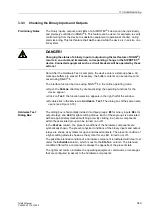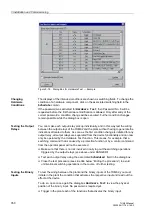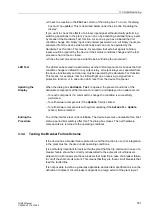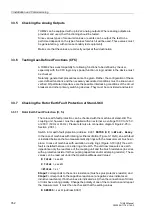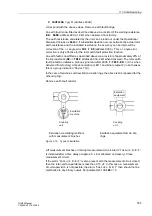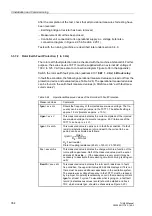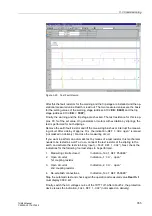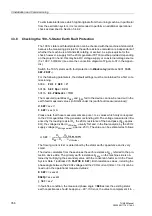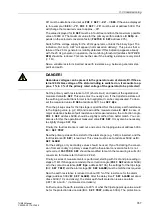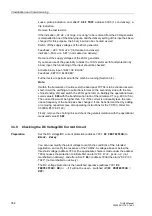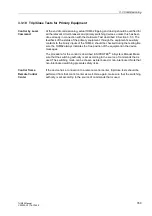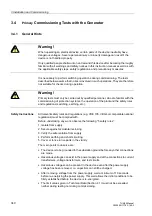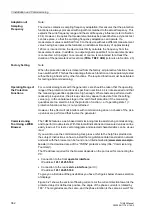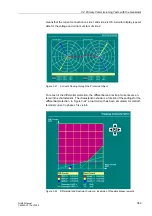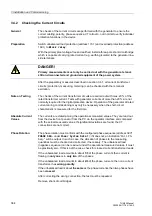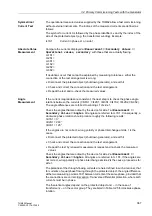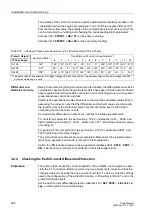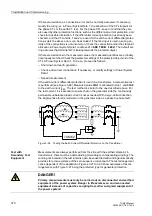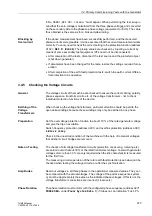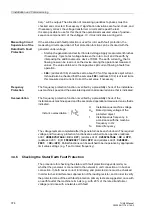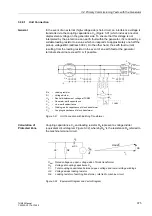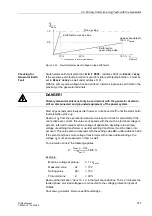
3 Installation and Commissioning
362
7UM62 Manual
C53000-G1176-C149-3
Adaptation of
Sampling
Frequency
Note:
The device contains a sampling frequency adaptation; this ensures that the protection
functions are always processed with algorithms matched to the actual frequency. This
explains the wide frequency range and the small frequency influence (refer to Section
4.34). However, it requires that measurement values be present before a dynamic test
can take place, so that the sampling frequency adaptation can operate. If a
measurement value is switched from 0 to the device without a different measurement
value having been present beforehand, an additional time delay of approximately
120 ms is incurred since the device must firstly calculate the frequency from the
measurement value. In addition, no output signal is possible if no measurement value
is connected. A trip signal, once issued, of course, is maintained for at least the
duration of the parameterized reset time (
Factory Setting
Note:
When the protection device is delivered from the factory, all protective functions have
been switched off. This has the advantage that each function can be separately tested
without being influenced by other functions. The required functions must be activated
for testing and commissioning.
Operating Range of
the Protection
Functions
For commissioning tests with the generator, care should be taken that the operating
range of the protection functions as specified in section 4.34 is not exceeded and that
the measuring quantities applied are high enough. Where tests are performed with
reduced pick-up values, the pick-up value may appear to deviate from the setting
value (e.g. in the unbalance stage or the earth fault protection) if the measuring
quantities are too small to block the protection function, i.e. if operating state 1 (=
protection function active) is not yet attained.
However, this effect will not interfere with commissioning since no checks of the pick-
up values are performed that involve the generator.
Commissioning
Tool Using a WEB
Browser
The 7UM62 features a web-based commissioning tool to assist during commissioning,
and to perform routine tests. With this tool all indications and measured values can be
easily read out. For tests, vector diagrams and selected characteristics can be visual-
ized.
If you want to use the commissioning tool, please refer to the help files provided on
the subject. Instructions on how to install the long-distance data transmission network
and work with the browser can be found on an Internet website (www.siemens.sipro-
tec.de) in the download area of the “7SD52” protective relay (title: “Commissioning
Tool Help”).
The IP address required for the browser depends on the port used for connecting the
PC:
•
Connection to the front operator interface:
IP address 141.141.255.160
•
Connection to the rear service interface (port C):
IP address 141.143.255.160
To give you a first idea of the possibilities you have, the figures below show a selection
of displays.
Figure 3-21 shows the vectors of flowing currents. As the current direction towards the
protected object is defined as positive, the angle of the phase currents is rotated by
180°. The magnitudes are the same, and the phase rotation is the same as well. This


